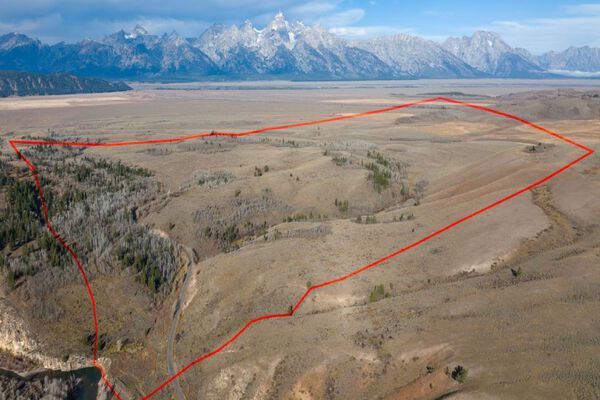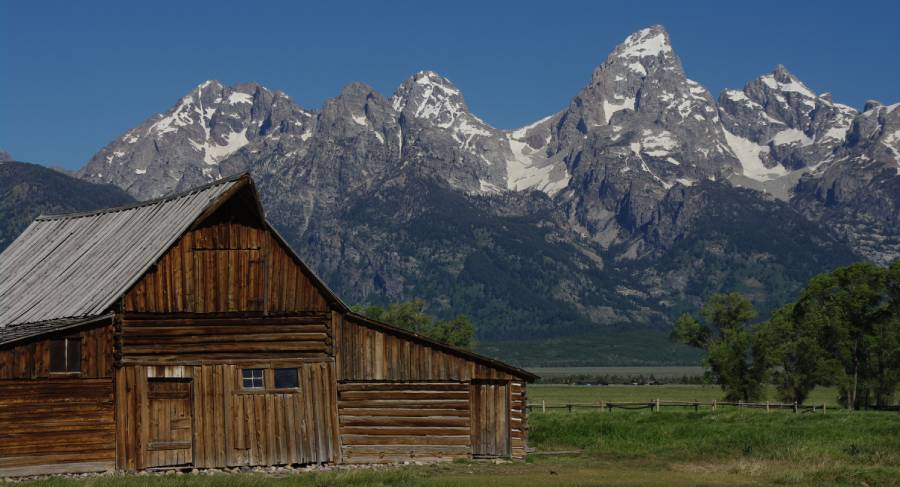
Mormon Row, formerly known as the town of Grovont, was settled in the late 1890s by Mormons from the Salt Lake region. Due to the Homestead Act of 1862, which granted land ownership to any person willing to build a house and cultivate the area for five years, this community was able to establish a presence in the area east of Blacktail Butte. Settlers secured 27 homesteads that they built close together to share labor and community.
Settlers dug miles of ditches to bring water from the Gros Ventre River to their fields. In the winters, these ditches would freeze so families traveled to the river with buckets to gather much-needed water. It wasn’t until 1927 that the Kelly Warm Spring cooled, caused by hydrologic shifts from the Gros Ventre slide flood, and offered a dependable water source to residents year-round. Families mainly grew hay and ninety-day-oats, as these were a few of the only crops that were able to survive the short growing season and harsh conditions of Jackson Hole. Families also owned cows, whose milk and meat provided food, as well as horses, that helped settlers till the fields.
The town of Grovont once contained multiple ranches, homes, a church, and a school. The church, built in 1916, played a critical role in the community, serving as a social stage for all, regardless of faith. Although the building was moved to Wilson, it is marked at Mormon Row by fence posts, two cottonwoods, and a spruce tree.
In the mid-1900s, Mormon Row was acquired to expand Grand Teton National Park and in 1997 the district was added to the National Register of Historic Places. Below are descriptions of some of the barns that still stand today, offering the same feeling and setting of the district as it was 100 years ago.
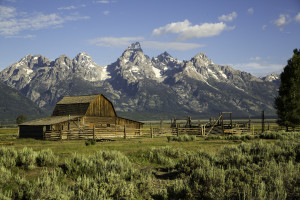
John Moulton Barn, Photo by Eric Seymour
John Moulton Barn
The John Moulton Barn is part of John and Bartha Moulton’s homestead. Today, this barn and their more modern-style, pink stucco home still stand on their homestead, which was inhabited seasonally until the late 1980s. Many travel from around the world to photograph this historic structure.
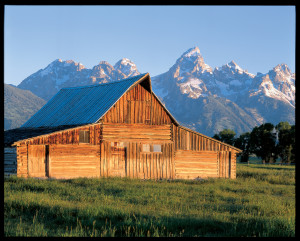
T.A. Moulton Barn, Photo by Jackson Hole Traveler
T.A. Moulton Barn
Just south of his brother’s homestead, the T.A. Moulton Barn is part of the Thomas Alma and Lucille Moulton homestead. Settled in 1910, T.A. took over 30 years to build his barn. Along with the John Moulton barn, photographers from around the world travel to take photos of this iconic structure with the Teton mountain range in the background.
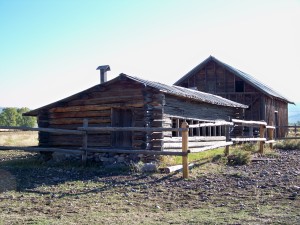
Andy Chambers Homestead, Photo from GTNP
Chambers Barn
The Chambers Barn was built on the Andrew (Andy) and Ida Chambers homestead. Today it is the most intact homestead that remains at Mormon Row. Andy Chambers settled in the area in 1912, securing a title under the Homestead Act by building a log cabin, a stable, and clearing the land to grow crops. Later he built a windmill to produce electricity for his home, which still stands today. The Chambers homestead was added to the National Register of Historic Places in 1990 and was included as part of the Mormon Row district in 1997.
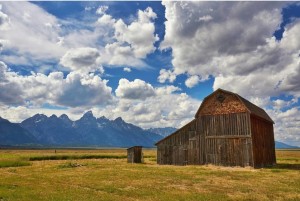
Thomas Murphy Barn, Photo by Johnathan Valdez
Thomas Murphy Barn/ Reed Moulton Barn
This barn was originally built by Thomas Murphy and was later purchased by Joe Heninger. Heninger held the mail contract for the Jackson to Moran route. In the winter he offered his homestead as a resting place to feed and warm drivers and their horses.
Clark & Veda Moulton Homestead (not pictured)
Clark Moulton, T.A. Moulton’s son, was the owner of the last remaining private property on Mormon Row. When Clark married Veda in 1936, T.A. Moulton gave his son a one-acre plot in the corner of his homestead. The two built a house on the property, which still stands today.









